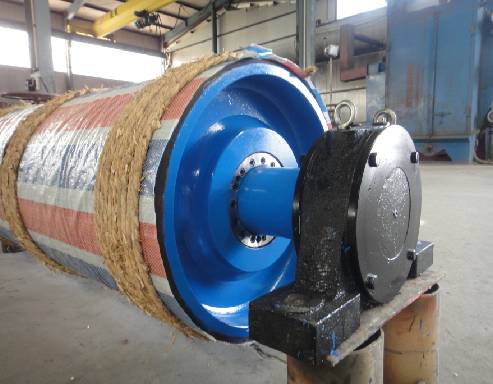 Afrikaans
Afrikaans  Albanian
Albanian  Amharic
Amharic  Arabic
Arabic  Armenian
Armenian  Azerbaijani
Azerbaijani  Basque
Basque  Belarusian
Belarusian  Bengali
Bengali  Bosnian
Bosnian  Bulgarian
Bulgarian  Catalan
Catalan  Cebuano
Cebuano  Corsican
Corsican  Croatian
Croatian  Czech
Czech  Danish
Danish  Dutch
Dutch  English
English  Esperanto
Esperanto  Estonian
Estonian  Finnish
Finnish  French
French  Frisian
Frisian  Galician
Galician  Georgian
Georgian  German
German  Greek
Greek  Gujarati
Gujarati  Haitian Creole
Haitian Creole  hausa
hausa  hawaiian
hawaiian  Hebrew
Hebrew  Hindi
Hindi  Miao
Miao  Hungarian
Hungarian  Icelandic
Icelandic  igbo
igbo  Indonesian
Indonesian  irish
irish  Italian
Italian  Japanese
Japanese  Javanese
Javanese  Kannada
Kannada  kazakh
kazakh  Khmer
Khmer  Rwandese
Rwandese  Korean
Korean  Kurdish
Kurdish  Kyrgyz
Kyrgyz  Lao
Lao  Latin
Latin  Latvian
Latvian  Lithuanian
Lithuanian  Luxembourgish
Luxembourgish  Macedonian
Macedonian  Malgashi
Malgashi  Malay
Malay  Malayalam
Malayalam  Maltese
Maltese  Maori
Maori  Marathi
Marathi  Mongolian
Mongolian  Myanmar
Myanmar  Nepali
Nepali  Norwegian
Norwegian  Norwegian
Norwegian  Occitan
Occitan  Pashto
Pashto  Persian
Persian  Polish
Polish  Portuguese
Portuguese  Punjabi
Punjabi  Romanian
Romanian  Russian
Russian  Samoan
Samoan  Scottish Gaelic
Scottish Gaelic  Serbian
Serbian  Sesotho
Sesotho  Shona
Shona  Sindhi
Sindhi  Sinhala
Sinhala  Slovak
Slovak  Slovenian
Slovenian  Somali
Somali  Spanish
Spanish  Sundanese
Sundanese  Swahili
Swahili  Swedish
Swedish  Tagalog
Tagalog  Tajik
Tajik  Tamil
Tamil  Tatar
Tatar  Telugu
Telugu  Thai
Thai  Turkish
Turkish  Turkmen
Turkmen  Ukrainian
Ukrainian  Urdu
Urdu  Uighur
Uighur  Uzbek
Uzbek  Vietnamese
Vietnamese  Welsh
Welsh  Bantu
Bantu  Yiddish
Yiddish  Yoruba
Yoruba  Zulu
Zulu Various Types and Uses of Conveyor Rollers for Efficient Material Handling
Different Types of Conveyor Rollers
Conveyor rollers are essential components in material handling systems, playing a critical role in the efficient transportation of goods across various industries. The type of roller used can significantly affect the performance, maintenance, and cost-effectiveness of a conveyor system. Understanding the different types of conveyor rollers and their applications can help businesses make informed decisions about their material handling needs.
1. Idler Rollers
Idler rollers are one of the most common types of conveyor rollers. They are primarily used to support the conveyor belt and maintain its tension. Idler rollers come in various designs, including troughing, flat, and return rollers. Troughing idlers are designed with a slight incline, allowing better load support and preventing material spillage, while flat idlers support the belt in its return run. The material used for idler rollers can vary from steel to plastic, depending on the specific requirements of the application.
Drive rollers, as the name suggests, are responsible for driving the conveyor system. These rollers pull the belt forward, facilitating the movement of materials along the conveyor. Drive rollers can be powered by electric motors or gravity, depending on the design of the conveyor. The diameter of drive rollers typically varies based on the load requirements and speed of the conveyor. In many cases, drive rollers are coated with materials such as rubber or polyurethane to ensure better grip and reduce slippage.
3. Return Rollers
different types of conveyor rollers

Return rollers are essential for ensuring that the conveyor belt remains on track and properly aligned during its return phase. These rollers support the belt as it travels back to the loading point. While their primary purpose is to facilitate the return of the belt, return rollers are also designed with features to reduce wear and minimize noise during operation. Similar to idler rollers, return rollers can be made from various materials, ensuring durability and longevity in different environments.
4. Specialty Rollers
In addition to standard idler, drive, and return rollers, there are specialty rollers designed for specific applications. For example, molded rollers may include features like grooves or bumps to enhance traction for specific materials or to facilitate the movement of fragile goods. Impact rollers are designed to absorb shock during material loading, protecting both the conveyor system and the products being transported. Similarly, spill-proof rollers have a unique design to prevent materials from escaping the sides of the conveyor, especially when handling loose or bulk items.
5. Skewed Rollers
Skewed rollers are used primarily in applications where the conveyor must change direction. By tilting the roller at a specific angle, skewed rollers help guide materials through curves without the need for additional equipment. They are particularly useful in modular conveyor systems, where flexibility and adaptability are critical.
Conclusion
Selecting the right conveyor roller is vital for optimizing the efficiency and longevity of a conveyor system. With various types of rollers available, including idler, drive, return, specialty, and skewed rollers, businesses can tailor their material handling solutions to meet specific operational needs. Understanding the unique advantages and applications of each roller type enables businesses to enhance productivity, reduce maintenance costs, and improve overall material flow. Whether in manufacturing, warehousing, or logistics, the right conveyor roller can make a significant difference in operational efficiency.
-
Trusted Conveyor Solutions from Leading Conveyor Idler Roller ManufacturersNewsJun.27,2025
-
Reliable Return Idler Solutions for Efficient Belt Conveyor SystemsNewsJun.27,2025
-
Precision Conveyor Accessories for Streamlined Material HandlingNewsJun.27,2025
-
High-Quality Belt Conveyor Idler Solutions for Efficient Material HandlingNewsJun.27,2025
-
High-Performance Belt Conveyor Pulleys for Reliable Material HandlingNewsJun.27,2025
-
Enhancing Material Handling EfficiencyNewsJun.27,2025





























